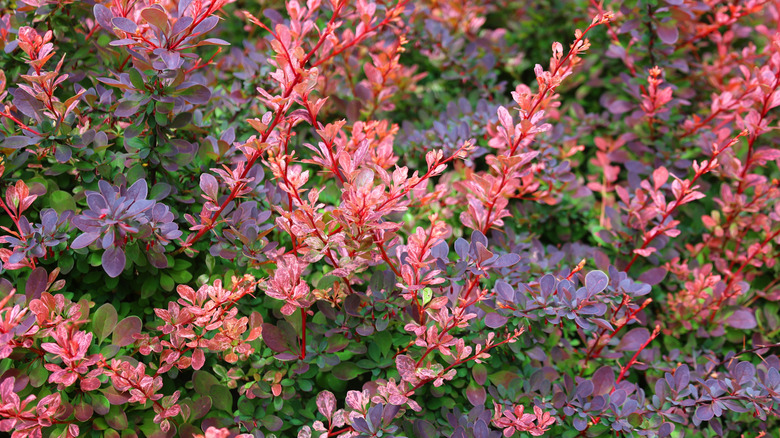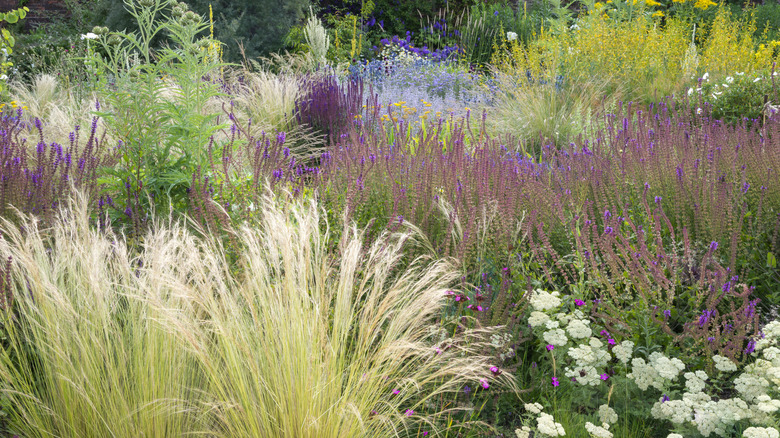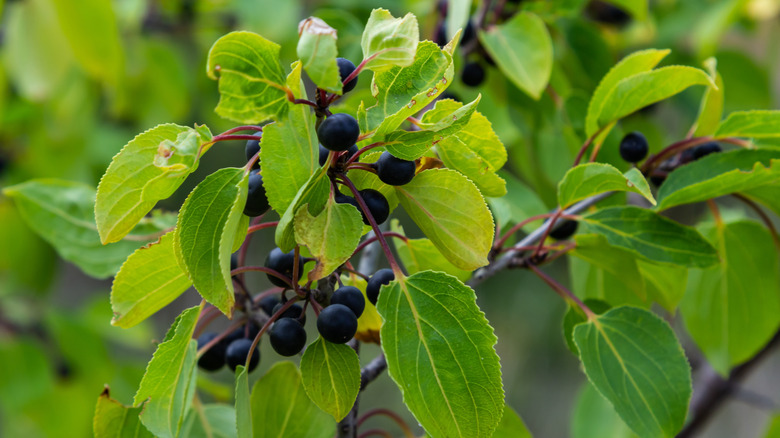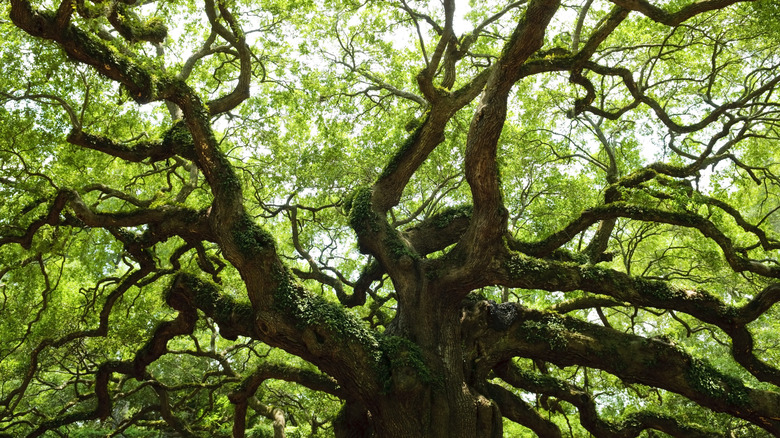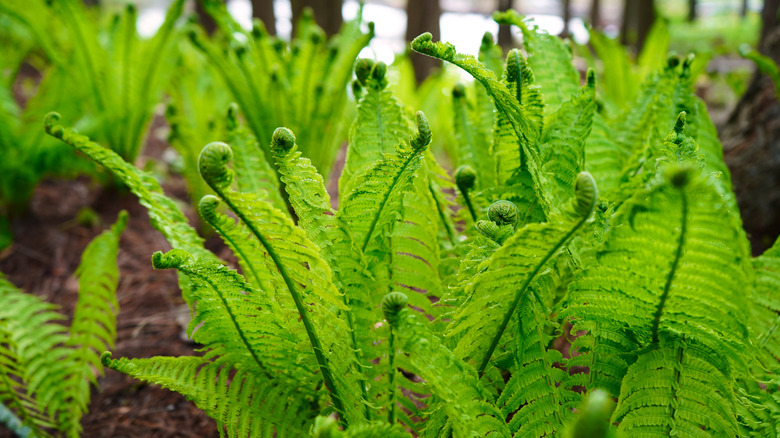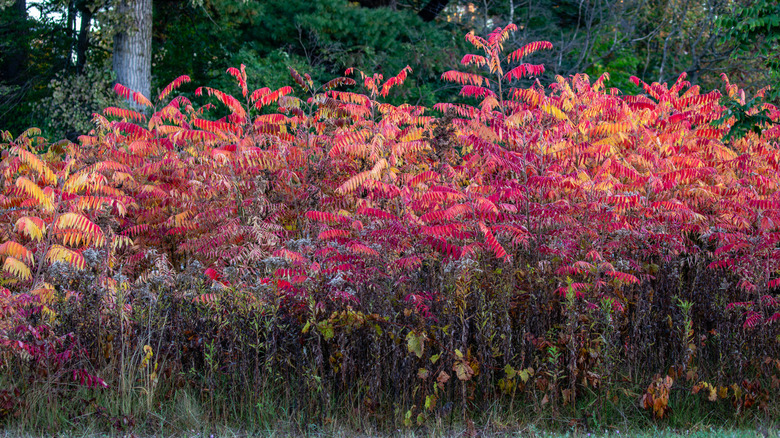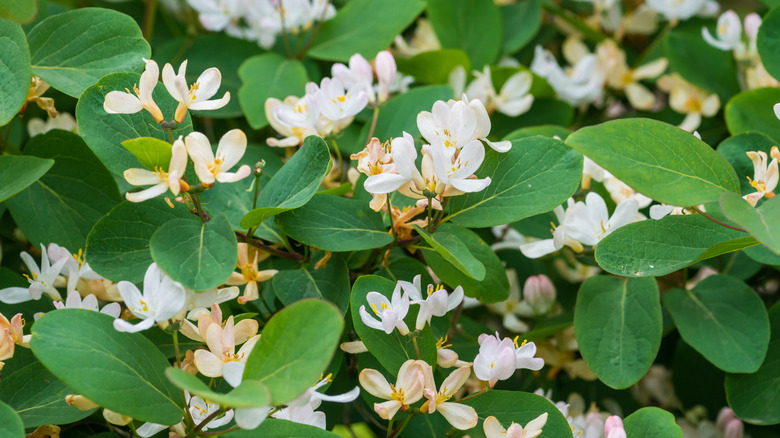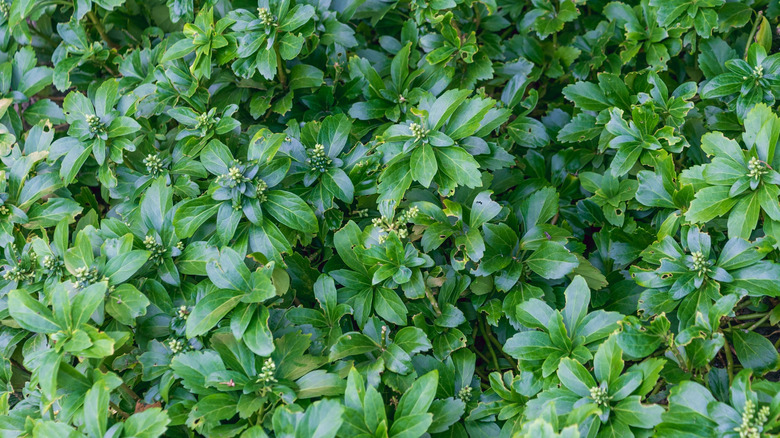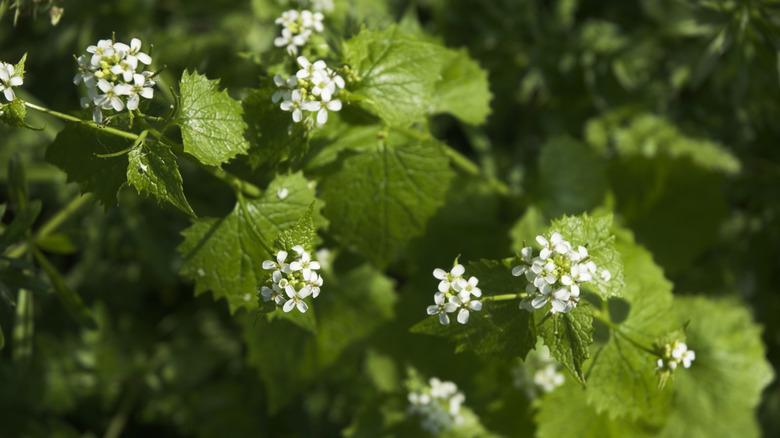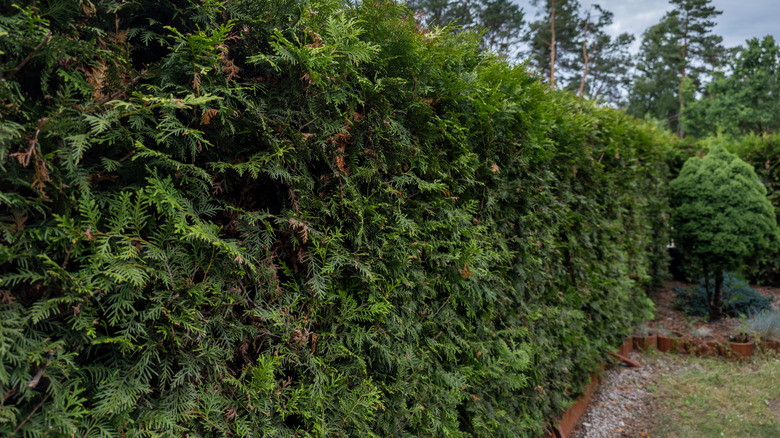If You Want To Keep Ticks Out Of Your Yard, Avoid Growing These 12 Plants
Unfortunately, the insect that you want to avoid the most is one that is probably all too common in your outdoor areas. Ticks, including the wood tick and deer tick, are notorious pests that latch onto humans and pets without warning. Deer ticks, also known as blacklegged ticks, can be carriers for Lyme and other diseases, making them a particular cause for concern. These bugs lie in wait, hiding amongst the foliage, and cling on to their victims as they brush by. While insect repellents can help deter these pests, if you want to reduce the chances of getting bit by a tick in your yard, it's best to avoid certain plants like invasive Japanese barberry and ferns to not give them a spot to hide out in the first place.
There are a lot of plants that keep ticks out of your yard that can help you naturally repel these pesky little bugs, but it is just as important to avoid certain plants that will likely attract them. In general, ticks love shaded, moist areas and seek dense branches that they can climb. It's unlikely that choosing to not plant these species will completely solve your tick issues. However, it is a great start towards conscious landscaping as a way to reduce your family and friends' risk of tick-transmitted disease.
Barberry is beautiful, but it's invasive and a favorite for ticks
If it's not enough of a deal breaker that Japanese barberry (Berberis thubergii) is an invasive species in North America, the fact that ticks thrive in its branches should be. Growing this shrub is popular thanks to its lovely bright red fall color. However, it outcompetes native plants and has been found to harbor an above-average number of ticks. The dense branches form thickets in the wild and are used to create hedges in landscapes. This thick growth leads to increased humidity, which ticks thrive in.
Low-lying pine tree branches hide ticks
A combination of deep shade and low branches is a perfect match for ticks, as these critters typically do not climb high up into trees. You should stop and think before you plant new pine (Pinus spp.) trees in your yard, because they provide ample places for ticks to wait for a host. Some pine trees, like white pine (Pinus strobus), feature drooping branches that make great cover for ticks. Others, like mugo pine (Pinus mugo) trees, spread out and grow lower to the ground, creating dense canopies for ticks to hide within.
Lush, ornamental grasses should be controlled
While the plants themselves don't have any direct tick-attracting abilities, most ornamental grasses create the ideal conditions for this pest. Tall grass with dense foliage increases humidity, moisture, and the presence of ticks. If you cannot keep them neatly maintained in your yard, it might be best to not plant species like blue gamma (Bouteloua gracilis) and Mexican feather grass (Nessella tenuissima). Be sure to consider the negatives along with all of the advantages to growing ornamental grasses in your yard and garden before adding them to your space.
Buckthorn provides shady habitat for ticks
A dense shrub considered invasive in the U.S., buckthorn will attract more ticks to your yard. There are two species, common buckthorn (Rhamnus cathartica) and glossy buckthorn (Frangula alnus). Avoid introducing either of these shrubs into your landscaping, and consider a plan for removal they are already growing. Buckthorn shrubs outcompete other plants by creating thick shaded areas, also giving ticks an ideal habitat. Small buckthorn plants can be removed by pulling, but larger plants need to be cut down and killed with herbicides or stem treatments to prevent regrowth.
Stay away from the dense branches of the oak tree
The dense branches of many oak (Quercus spp.) trees, including red oak (Quercus rubra) and post oak (Quercus stellata) are prime real estate for wandering ticks. Thick foliage, like that found on red oaks and post oaks, means more humidity and fewer chances that ticks will die of dehydration. In addition to being a hideaway for ticks, oaks provide food for squirrels and chipmunks. An abundance of acorns from oak trees will attract numerous critters who feature as hosts for harmful tick species.
Skip moisture-loving ferns for fewer ticks
This tick-attracting plant you might want to avoid growing in your yard is unfortunately very popular for landscaping. Ferns, like the Boston fern (Nephrolepis exaltata), require very high levels of humidity and moisture when planted outdoors. By nature of their growing requirements, ferns will attract an above average amount of ticks. Unfortunately, ticks take advantage of the perfect humid environment generated around the beautiful green fronds. Additionally, ticks are more common in shaded places where Boston ferns would be planted.
Avoid popular shrubs that deer enjoy like staghorn sumac
Plants that attract more deer to your outdoor areas, such as staghorn sumac (Rhus typhina), also put your yard at higher risk for ticks. Deer are considered tick hosts, so it stands to reason that bringing more deer into your space will naturally bring along more ticks. Plus, staghorn sumac has an aggressive spreading habit, creating large areas of coverage up to 25 feet wide. Instead of plants that deer prefer to browse from, consider deer-resistant options like American holly (Ilex opaca).
Ticks hide in dense, bushy honeysuckle
Not only will you run into issues with the invasive nature of many bush honeysuckles (Diervilla spp.), but they could attract more ticks. Bush honeysuckles are a type of woody invasive shrub that creates ideal conditions for ticks. Invasive examples include Tartarian (Lonicera tatarica) and Morrow's (Lonicera morrow) honeysuckle, which are both non-native shrubs originally brought to the U.S. for ornamental plantings. Along with being harmful to the environment, bush honeysuckle is attractive to deer, which in turn increases the population of disease-transmitting ticks in the area.
Messy species, like sycamores, mean more ticks
Leaf litter and detritus on the ground creates easy hiding spots for ticks. Avoid growing plants and trees that create a lot of mess, whether due to dropping leaves, fruit, or branches. For example, the American sycamore (Plantus occidentalis) tree sheds a lot of leaves and twigs. It takes extra time and maintenance to rake or blow sycamore leaves into neat piles, but that may create more issues. According to a study published in the Journal of Medical Entomology, higher numbers of ticks can be found in areas of raked or blown leaves.
Don't plant this ground cover species near your home
Japanese pachysandra (Pachysandra terminalis) is a ground cover you won't want to grow if you're trying to keep mosquitoes away, and the same is true for ticks. Ticks enjoy the low-lying, shaded coverage of this non-native boxwood. This spreading ground cover grows well in shade, which further increases the likelihood of ticks. Japanese pachysandra is also an invasive species which can do further harm to your landscape, but environmentally conscious native pachysandra species, like Allegheny spurge (Pachysandra procumbens), are also ground covers that will provide ticks with a home.
Garlic mustard leads to increased ticks
This noxious weed might not be something you choose to grow, but it is a plant you want to eradicate promptly from your yard. Garlic mustard (Alliaria petiolata) is both invasive and increases populations of blacklegged ticks. Evidence suggests that garlic mustard produces chemicals that prevent other plants from growing near it, and further studies indicate that these same chemicals might eliminate beneficial fungi in the soil that help control tick populations. If you see it in your yard, pull it out by hand before it flowers and potentially use herbicide for large colonies.
Arborvitae and other privacy hedges can be trouble
Common hedge plants and evergreen species used for privacy, like eastern arborvitae (Thuja occidentalis), might be encouraging ticks to come to your yard. A study published in Infection Ecology & Epidemiology linked the presence of hedges in a yard with a higher chance of encountering ticks. The problem with hedges and privacy screens is that their dense branches and vegetation create microclimates ideal for ticks to survive to adulthood. Arborvitae and other hedge plants are popular ways to form private spaces, but consider whether the benefits outweigh the risks.

